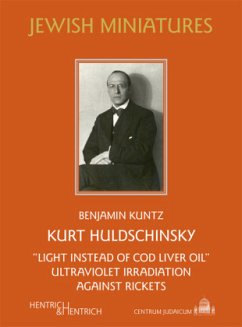Kurt Huldschinsky was born on November 24, 1883, in Gleiwitz, Upper Silesia. During his first years as a pediatrician, he worked among other things at the Kaiserin-Auguste-Victoria-Haus in Berlin and at the University Children's Hospital in Vienna. After the First World War, he worked for Konrad Biesalski at the Oskar-Helene-Heim children's hospital in Berlin. Here he was the first to prove that irradiation with artificial UV light could cure the bone disease rickets in young children, which is usually caused by vitamin D deficiency. For this groundbreaking discovery and his further research on the prevention and therapy of rickets, Huldschinsky was honored in 1926 with the Otto Heubner Prize of the German Society for Pediatrics. He was even nominated for the Nobel Prize in Medicine. As a Jew, he had to flee Germany from the National Socialists in 1933/34. Together with his wife and daughter, he emigrated to Egypt, where he died in Alexandria on October 31, 1940.
Hinweis: Dieser Artikel kann nur an eine deutsche Lieferadresse ausgeliefert werden.
Hinweis: Dieser Artikel kann nur an eine deutsche Lieferadresse ausgeliefert werden.







